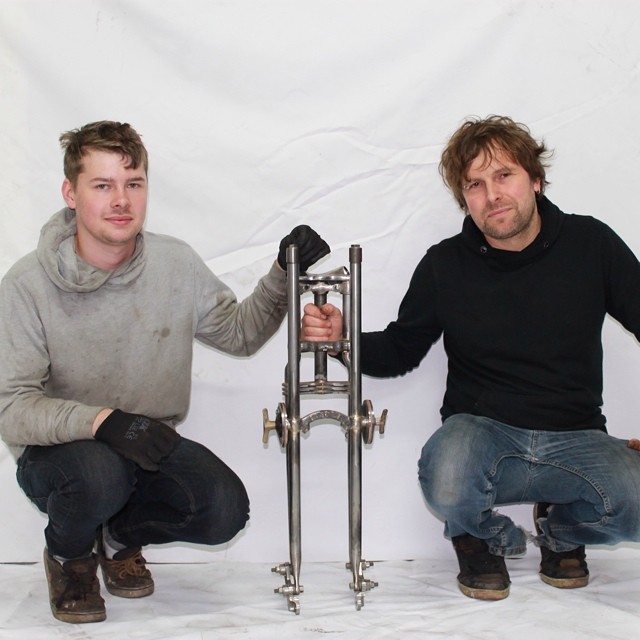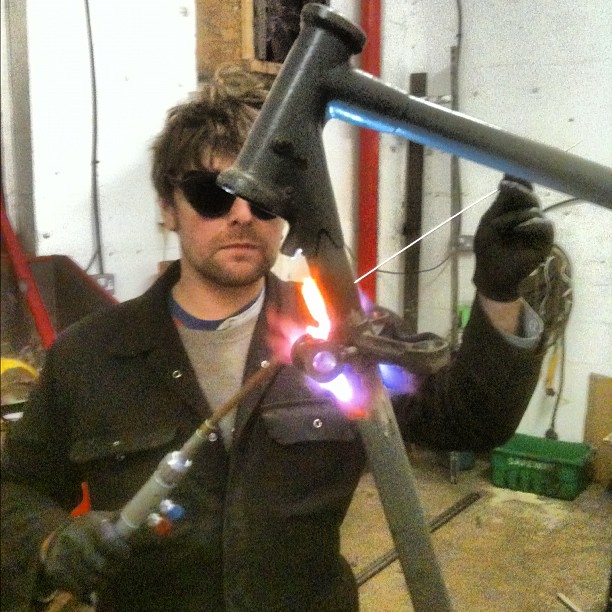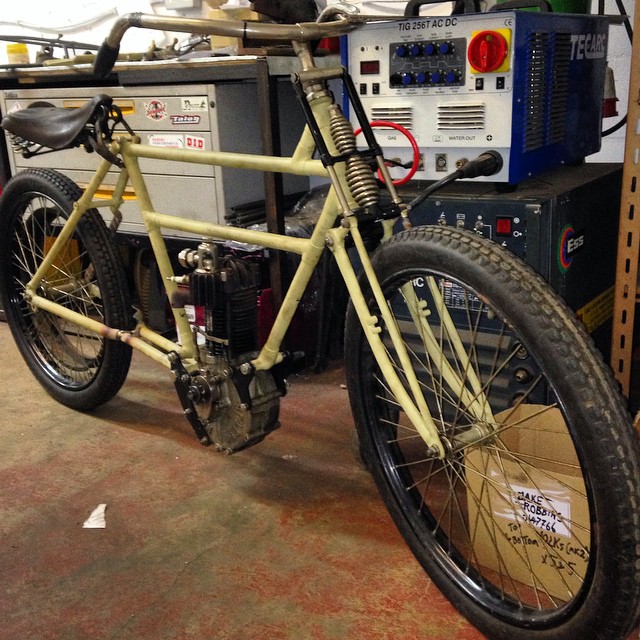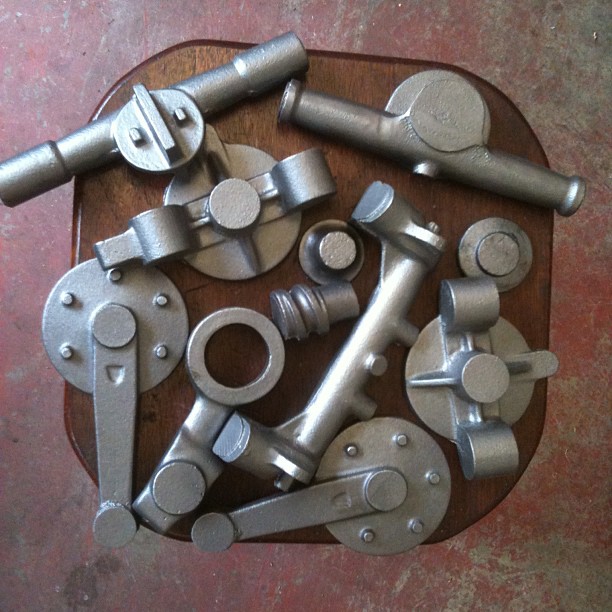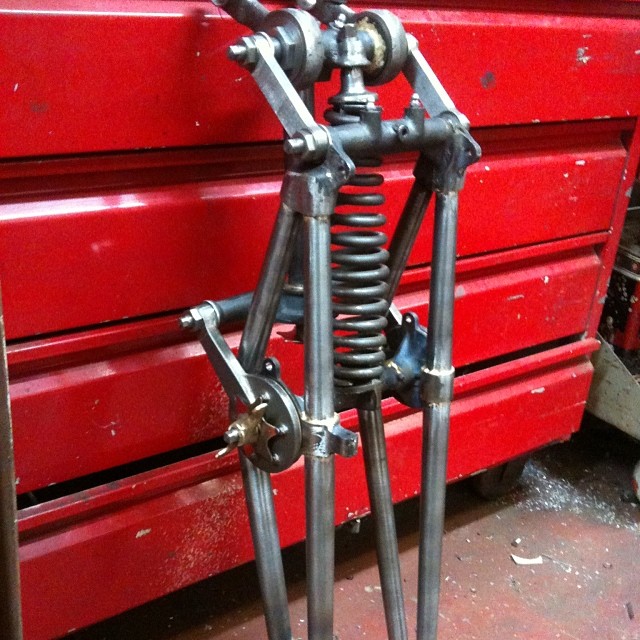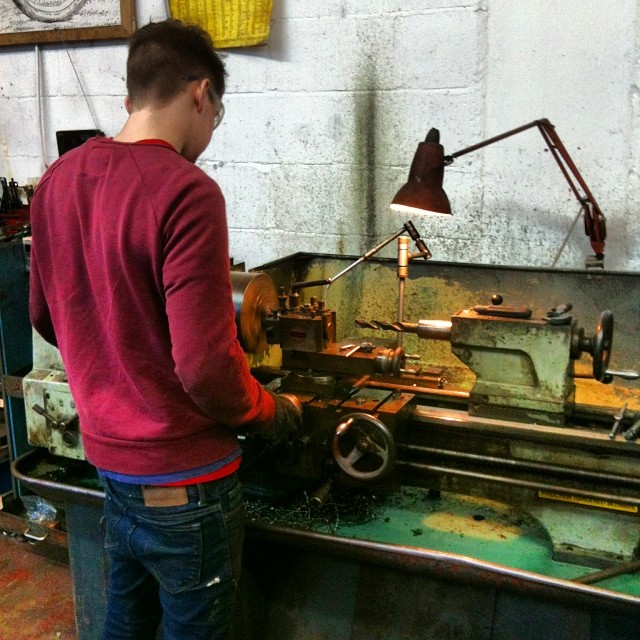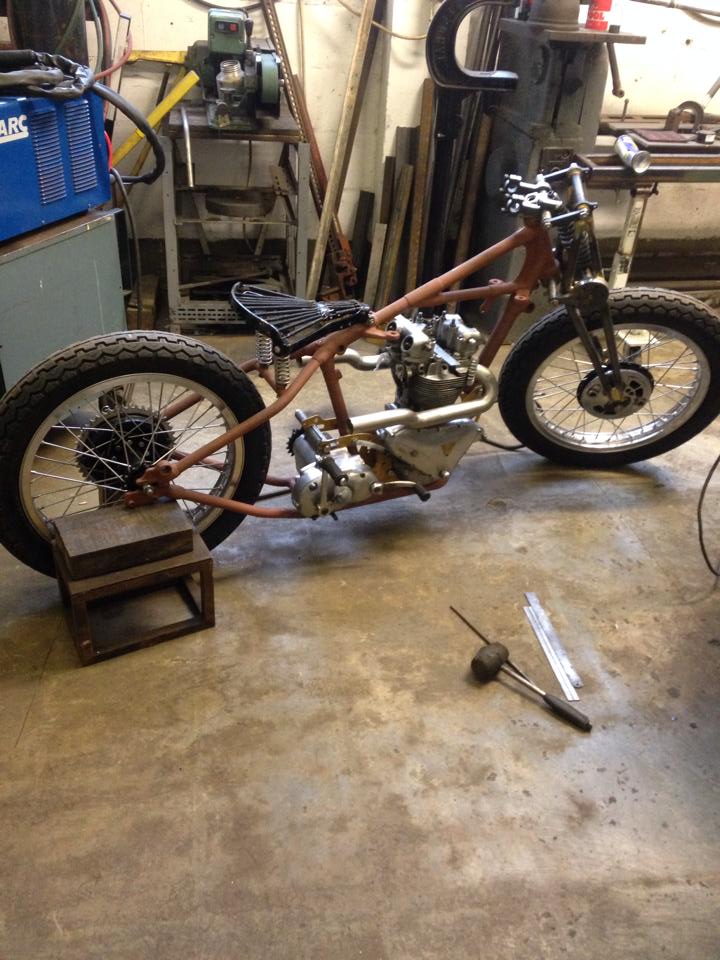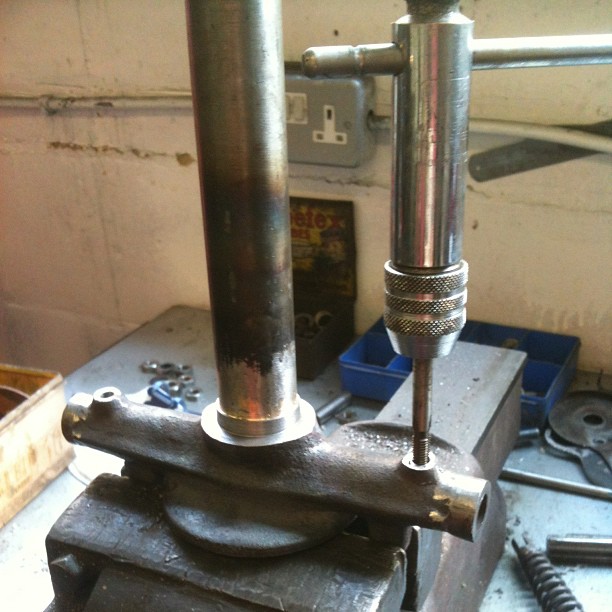Girder Forks and Jake Robbins Vintage Engineering
Jake Robbins (right) with son William and their Brough Superior exact replica made in England fork. All images courtesy Jake Robbins.
When manufacturers in the 1940s replaced what was the industry standard girder fork with the hydraulically damped telescopic unit motorcycles stepped into the modern age.
So absolute was the adoption of the new technology that owners of motorcycles from the 1930s were buying telescopic units and binning their girder forks. Shame, really, because the girder was a better system, especially in the early days of the telescopic. It was stronger, wouldn’t dive under braking, and was less prone to stiction. It did lack an appreciable amount of travel, but properly set up a girder provided a light, lithe, and sporty ride.
Maybe that’s why the girder might just be due for a comeback. Witness some of the modern examples of the technology, including BMW’s Telelever. BMW’s system doesn’t differ too much from traditional girder theory, but the hardware has been updated. Telelever uses an A-arm swingarm that pivots from the engine with a single monoshock attached to the A-arm and the motorcycle frame. The visible fork tubes do not provide suspension, rather they hold the front wheel in place and provide steering inputs.
Race icon John Britten experimented, successfully, with a girder design on his V1000. Instead of steel tubes, Britten’s girder was constructed of lightweight carbon fibre and Kevlar components, all suspended by a single Ohlins shock.
And, Yamaha licenced the rights to James Parker’s RADD (Rationally Advanced Design Development) front end in 1990, and built the GTS1000 from 1993 to 1996 around the alternative suspension system. Unlike Britten’s front end, which does resemble a girder, RADD is completely different. With hub-centre steering, the system is essentially two swing arms on the left side of the front wheel. Affixed to the front of a C-shape main frame, one arm is for suspension, and the other for braking and steering. RADD proved to be too much technology, and one that motorcyclists simply didn’t buy.
The girder fork, whether of a simple or more intricate design, was the most common front suspension system found on pre-Second World War motorcycles.
By the mid teens most motorcycles were fitted with a girder, and manufacturers included Brampton, Castle, Druid and Webb. Some motorcycle makers, Velocette, for example, bought in Webb forks to fit their range of machines. Other concerns, such as B.S.A. and Triumph, made their own and these designs closely resemble the Webb model.
Webb forks feature rigid sections of triangulated tubes (one on each side, commonly called a ‘blade’) that make up the main girder. This pivots on four points – two on the girder itself, one at the lower steering tube and one at the top crown. The whole arrangement is kept together with side links and adjustable spindles, and a single spring between the fork and the top crown provides a limited range of suspension travel.
Damping to affect compression and rebound is obtained through a friction system acting on the lower links. Friction damping is often adjusted using a knurled knob or large, intricate looking wing nut — ideally something turned easily with a gloved hand.
Thanks to the triangulated tube side blade construction, the girder is remarkably strong. In fact, that’s why many custom chopper builders in the late 1960s and 1970s preferred them to a telescopic front end. A girder could feature plenty of length, without suffering much of the flexing in extended telescopic fork tubes.
Regardless of make or model – from basic to exotic – original examples of vintage motorcycle girder forks in any type of condition are today quite a rare find. Anyone currently working on a basket case machine that is absent the girders, such as an Ariel or Triumph built in the 1930s, can attest to how scarce these forks really are.
Jake Robbins at work with gas torch.
There exists in the U.K. a man who has taken it upon himself to be a girder fork guru. Jake Robbins of Jake Robbins Vintage Engineering started with motorcycles when he was 12 years old, and with no money, had to learn to fix them himself. By the time he was 16 he’d left school and was working for local bike shops in East Sussex. Then, in 1992 he met and began working with Steve Burniston of ELK Engineering. Burniston was just starting to offer his specialties as a girder fork repairman, and under his tutelage, Robbins learned the engineering and welding skills required for this line of work.
“It also gave me a passion for bikes built pre-War,” Robbins said to me in an email. “Designers (of the era) had an eye for aesthetics, and sometimes to their detriment it was form over function. The bikes and the type of manufacture (available at) this time is a testament to the skills of the engineers, casting industry and tubesmiths.”
Extensively renovated chassis of a 1908 Anglian by Jake Robbins Vintage Engineering.
Burniston died in 2002 leaving the girder repairs in Robbins’ hands, and for years his business was mostly re-tubing and re-bushing tired forks. Now operating simply as Jake Robbins Vintage Engineering (he had to drop ELK Engineering, as there was another company operating under the same name), Robbins has begun casting various girder fork components, and is also building complete sets of forks. Robbins also does frame repairs, and has been commissioned to fabricate some rather intricate replica components.
As of 2011, he completed 10 sets of Castle girders, as fitted to Brough Superior motorcycles, and also finished a run of heavyweight Triumph girder forks.
Above, Triumph heavyweight girder fork castings for Jake Robbins Vintage Engineering. These were cast in the UK. And, below, Robbins’ exact replica Triumph 5T heavyweight girder forks.
Now, Robbins has moved into a new workshop, and he’s taken on oldest son William — now 19. William has been put to work turning, screw cutting, milling and working in the fabrication side of Robbins’ business.
William Robbins cutting 20 tpi threads on replacement girder fork spindles.
“He has taken off,” Robbins says of his son. “He’s built a Yamaha SR 250 into a fine cafe racer and has worked along side me with the design of the pre unit custom Triumph I’m building.”
Robbins and son William are currently constructing this special using a 500cc all-alloy Triumph pre unit engine and gearbox in an Ariel frame. Forks are, of course, by Jake Robbins Vintage Engineering.
But, Robbins notes, he’s also suffered some setbacks due to personal injury and water damage from fire crews attempting to knock down a blaze in an adjoining workshop.
“It burned to the ground, it took 40 fire fighters and 10 fire engines to put the fire out. There was an excessive amount of water and caustic foam pumped into my workshop. My space was knee deep in toxic black soot water, there was no power, and I wasn’t able to trade.”
Family and friends rallied around and helped Robbins rebuild, and now, the shop is back up and running. Good thing, too, as Robbins has turned his attention to the custom motorcycle market, having developed a set of budget girder forks (based on the heavyweight design of the Triumph Speed Twin girder). He has also taken on complete motorcycle builds, and more ambitious projects including work on film, stage art and even medical fabrications — all to back up the motorcycle side of the business.
Below, just a small sample of Robbins’ work, including newly created rear frame drop out, and a freshly machined lower yoke for a Norton girder fork.

